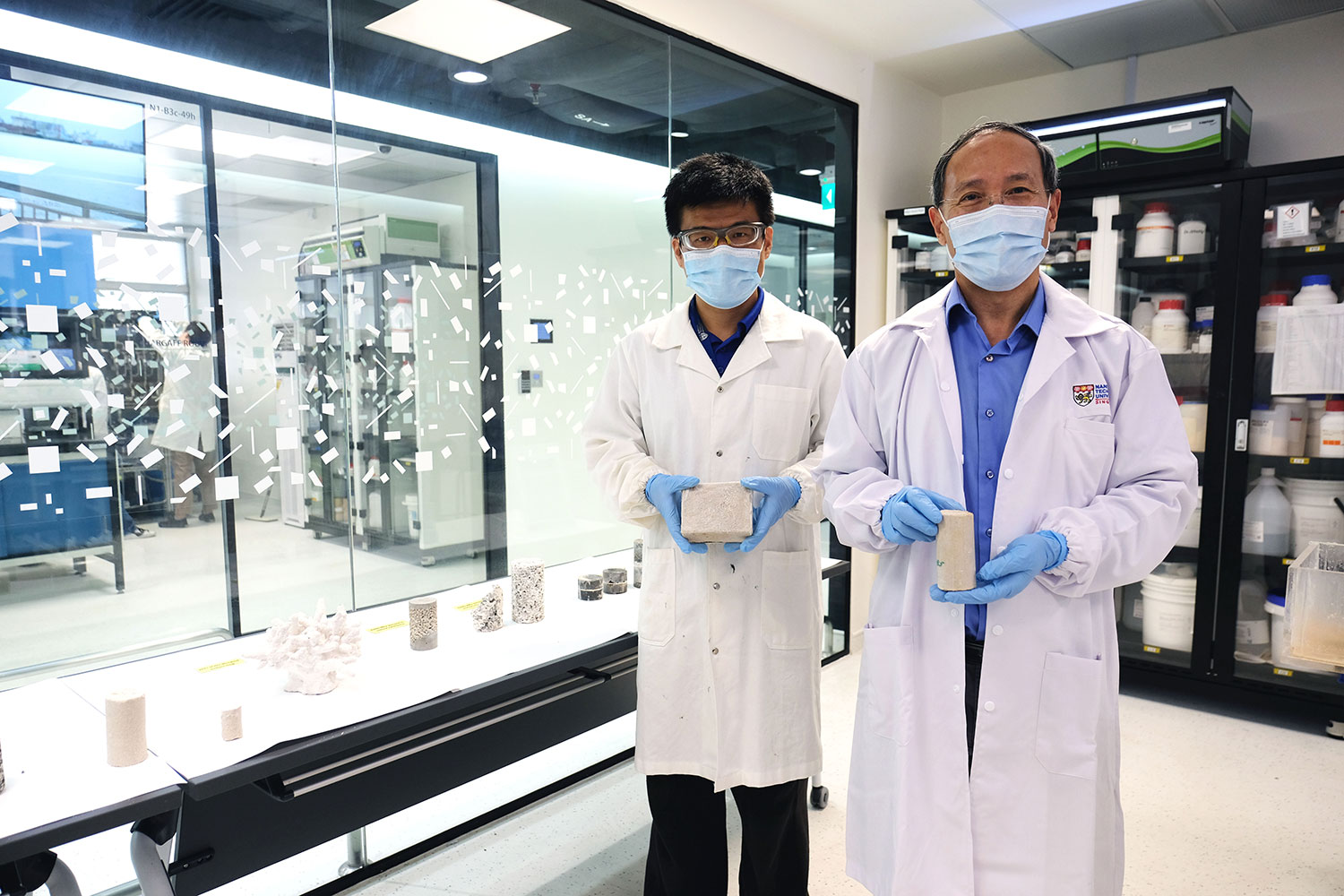
The production of cement is a major source of greenhouse gas emissions, as the ingredients have to be heated to very high temperatures. Now, researchers from Nanyang Technological University, Singapore (NTU Singapore) have created a new biocement made entirely from waste materials – a greener and more sustainable alternative to regular cement.
The biocement is made of two common waste materials – industrial carbide sludge – the waste material from the production of acetylene gas sourced from Singapore factories – and urea, which is derived from the urine of mammals. The process starts with treating carbide sludge with an acid to produce soluble calcium. Urea is then added to the soluble calcium to form a cementation solution. The team then adds a bacterial culture to this cementation solution, where they break down the urea to form carbonate ions.
Next, in a process called microbially induced calcite precipitation (MICP), these carbonate ions react with the soluble calcium ions to form calcium carbonate – a hard, solid material that is naturally found in chalk, limestone, and marble. When this reaction occurs in soil or sand, the resulting calcium carbonate generated bonds soil or sand particles together to increase their strength and fills the pores between them to reduce water seepage through the material.
The soil reinforced with biocement has an unconfined compression strength of up to 1.7 megapascals (MPa), which is higher than that of the same soil treated using an equivalent amount of cement. This makes the team’s biocement suitable for soil improvement projects, such as strengthening the ground for use in construction or excavation, controlling beach erosion, reducing dust or wind erosion in the desert, or building freshwater reservoirs on beaches or in the desert. The biocement could also be used to seal cracks in soil or rock to reduce water seepage.
Interestingly, the NTU team’s method in formulating biocement is the solution is colorless. When applied to soil, sand, or rock, their original color is preserved. According to the researchers, their biocement-making process requires less energy and generates fewer carbon emissions compared to traditional cement production methods. It is produced at room temperature without burning anything and is thus a greener, less energy-demanding, and carbon-neutral process.
The NTU Singapore team says that if biocement production could be scaled to the levels of traditional cement-making, the overall cost of its production compared to that of conventional cement would be lower, which would make biocement both a greener and cheaper alternative to cement.
Researchers turn urine and industrial sludge into eco-friendly biocement
Source: Global Access News

No comments:
Post a Comment